In this article, we will explore the ins and outs of Web3 technology. You will learn about blockchains, smart contracts, and decentralized applications (dapps). In addition to covering the various aspects of Web3 technology, we also provide a quick introduction to Moralis. Moralis is the number one blockchain infrastructure provider, enabling you to create Web3 projects faster and smarter. So, if you are eager to start building and leveraging Web3 technology, sign up with Moralis immediately!
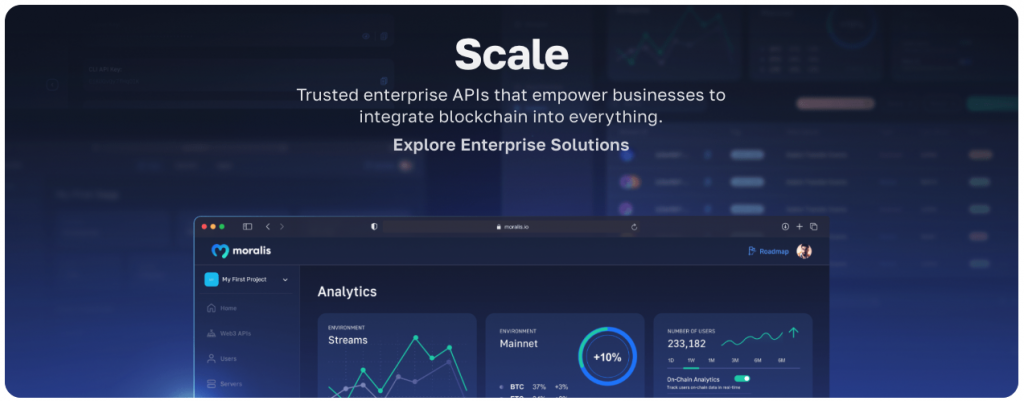
Overview
To fully understand Web3 technology and how it works, the article begins by exploring the history of the web. This will provide an overview of how the internet has evolved, giving insight into what drives the shift towards Web3. From there, we will jump straight into Web3 technology, where you will learn more about blockchains, smart contracts, and dapps (decentralized applications). Once you know what constitutes Web3 tech, we proceed by taking a closer look at Web3. Lastly, the article explores the Web3 tech stack and what makes the decentralized web important!
If you want to fully leverage the power of blockchain technology to build your own Web3 projects, consider exploring the best blockchain infrastructure as a service company: Moralis! Moralis provides enterprise-grade, cross-chain Web3 APIs, enabling you to build faster and smarter on any blockchain network. An excellent example is the Web3 Streams API. This tool lets you stream blockchain data into your projects via Moralis webhooks.
You can also check Moralis’ Web3 blog for more blockchain-related development content. For instance, explore what a Sepolia testnet faucet is or learn how to mint an NFT from a contract!

So, if you are serious about getting into Web3 development and leveraging blockchain technology, sign up with Moralis today. You can register for free, and it only takes a couple of seconds; you have nothing to lose!
The History of the Web
The history of the web can generally be divided into three distinct ”phases”: Web1, Web2, and Web3. To understand Web3, a good starting point is to examine the preceding phases and explore how the internet has progressed. As such, let us start with Web1 and the initial transition to Web2!
From Web1 to Web2
The first ”phase” or ”generation” of the internet was Web1. During this era, the internet’s primary function was relaying information. At this point, the web experience lacked interactive elements, and the internet was mainly a source to read information. As such, in the early days of the web, the experience was considered relatively static.
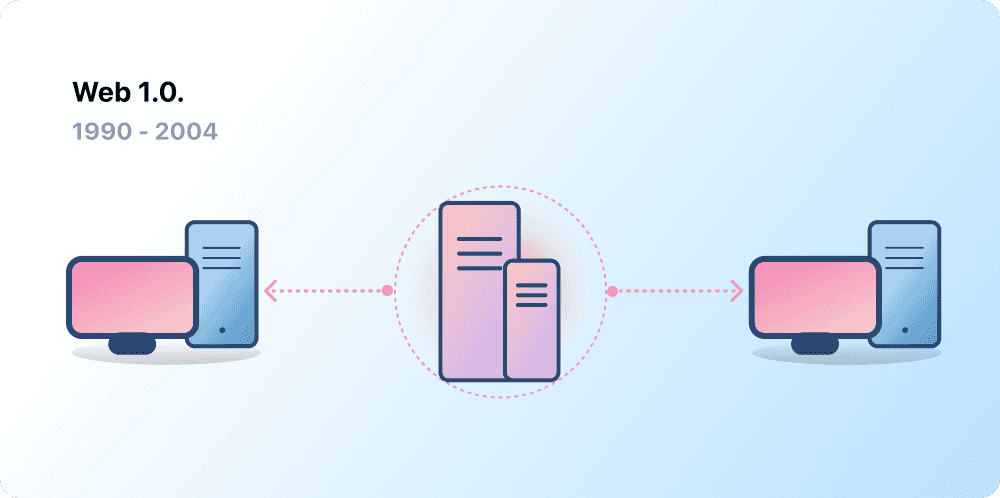
However, with the rise of huge social media conglomerates, this quickly changed, and the internet entered the phase we are most familiar with today: Web2.
From Web2 to Web3
With social media companies such as Facebook, Twitter, Instagram, etc., quickly emerging to become some of the world’s largest organizations, the web transitioned from static to dynamic. Instead of only reading the information, users now gained the option to write and contribute their own content.
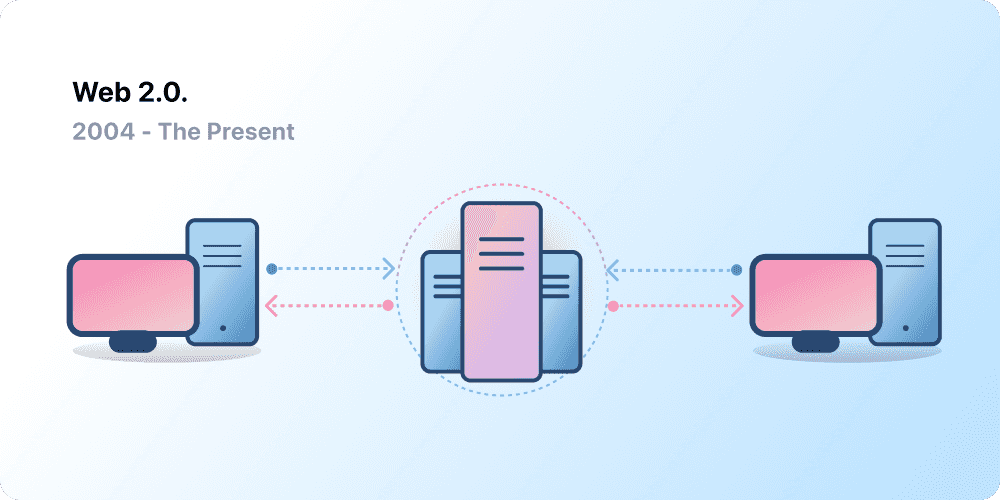
Web2 currently remains the predominant phase most people are familiar with today. Unfortunately, the new dynamic web experience came at the cost of centralization, which can be problematic for several reasons. For instance, the drawbacks can be transparency, privacy, and single points of failure issues that originate from the vast accumulation of personal data.
These are some of the central concerns driving the shift toward Web3. So, what is Web3? Before answering this question, let us look closely at the underlying technology enabling Web3!
Web3 Technology – What Is It and How Does It Work?
With an overview of the internet’s history and what led to the advent of Web3, let’s explore Web3 technology further. More specifically, we will cover three examples of central technologies for the decentralized web’s infrastructure: blockchains, smart contracts, and decentralized applications (dapps). So, without further ado, let’s start with the former and look closer at blockchain technology!
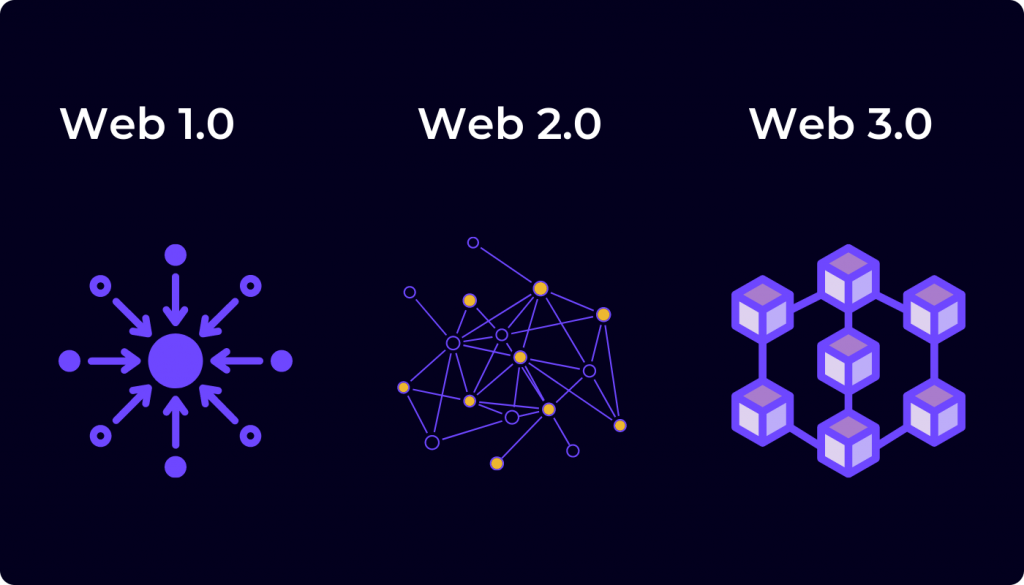
- Blockchain Technology – At the very center of Web3, you will find various blockchain networks. In essence, blockchain technology is an advanced database mechanism allowing for transparent information sharing. This further means that a blockchain is an immutable distributed ledger storing data in blocks linked together in a “chain-like” structure. The data within a blockchain network is chronologically stored, and it is impossible to modify or delete data without consensus.
- Smart Contracts – The second core technology of Web3 is smart contracts. Smart contracts are essentially a set of rules making up a program stored on a blockchain network. These programs automatically execute predefined actions based on predefined conditions. As a result, smart contracts are ideal for automating transactions and other business logic.
Learn more about how this works by checking out our smart contract programming tutorial or reading about smart contract programming languages!
- Decentralized Applications – The last Web3 technology we will cover here are dapps (decentralized applications). Dapps are not all that different from conventional applications you might be more familiar with. But, a noticeable difference is that dapps are equipped with blockchain functionality, as they are built on these decentralized networks. Dapps are essentially traditional applications built on a decentralized network, like a blockchain. If you want to explore these apps further, read the following guide: ”What are Dapps?”.
What is Web3? – Web3 Technology
With a better understanding of some components constituting Web3 technology, we are now ready to explore Web3 in further detail. So, what exactly is Web3? As we mentioned in the ”History of the Web” section, Web3 is the latest ”phase” or ”generation” of the internet!
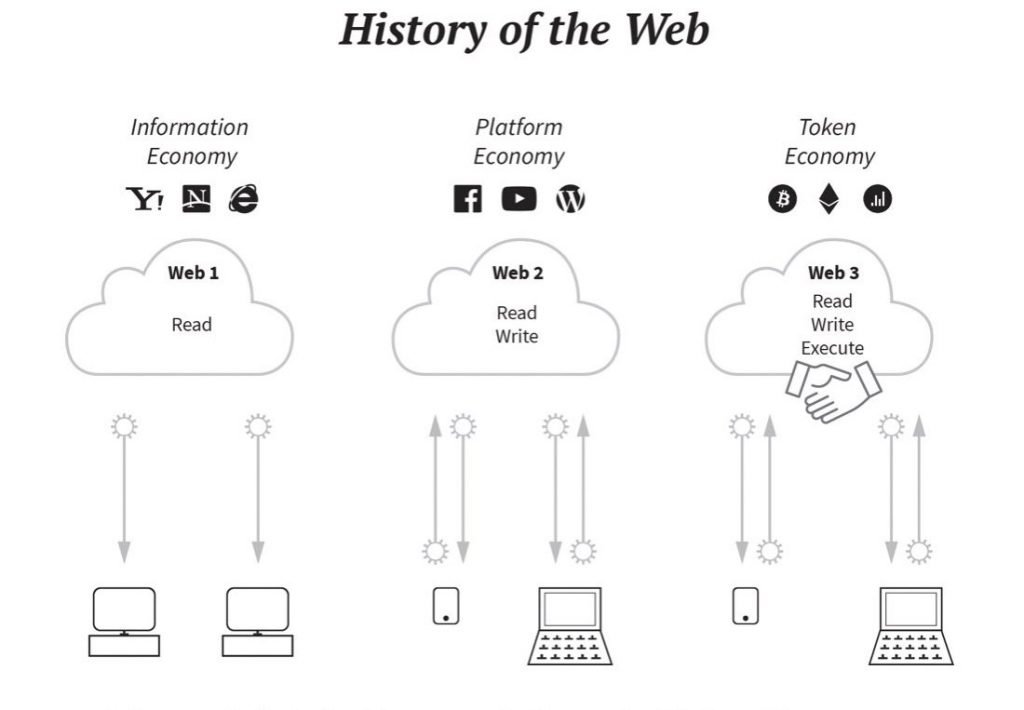
Each ”phase” or ”generation” of the web has been distinguished by key defining characteristics. Web1 was static; meanwhile, Web2 introduced a more dynamic web experience. Unfortunately, Web2 is also highly centralized, inducing issues with privacy, censorship, single points of failure, etc. These problems are currently driving and motivating the transition to Web3, a decentralized version of the internet.
In short, Web3 incorporates the notion of decentralization through the Web3 technology introduced in the previous section. Consequently, Web3 utilizes blockchain technology, smart contracts, dapps, etc., to build a new and improved decentralized internet!
Apart from decentralization, Web3 also features cryptocurrency-based economies. These systems allow you to pay for goods and transfer assets without conventional intermediaries such as financial institutions. Web3 also has a unified identification layer. This means that you can sign in to any dapp or Web3 platform using your Web3 wallets. As a result, you can avoid keeping track of endless usernames and passwords – like in Web2 – which provides a more seamless user experience!
The Tech Stack Behind Web3
With our memories refreshed regarding Web3, you might be wondering what the tech stack behind the decentralized web looks like. For this reason, this section will broadly cover the Web3 tech stack in its entirety. Moreover, the current blockchain tech stack has five primary layers:
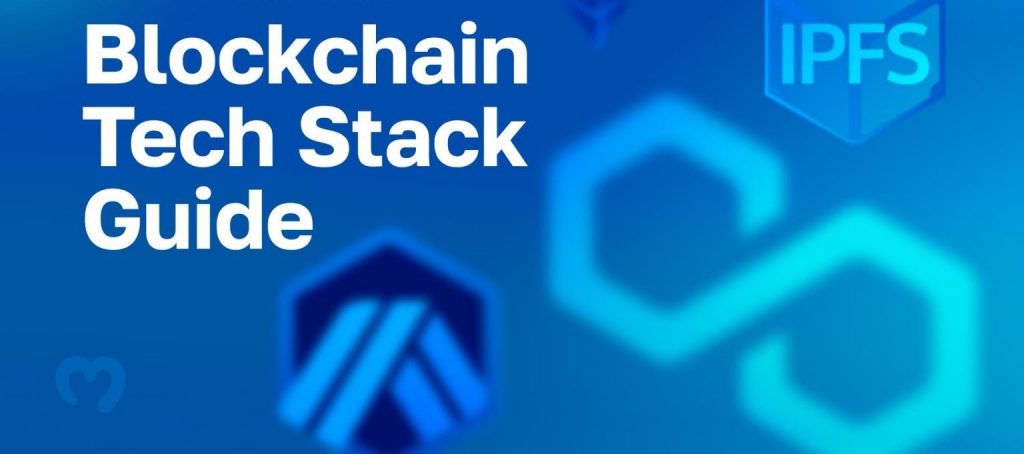
- Programmable Blockchains – The initial layer consists of programmable blockchains. Each remaining layer is stacked on top of the first, meaning that blockchains are at the foundation of the Web3 tech stack. There are multiple chains up and running for you to use in your Web3 development endeavors. Some prominent examples are Ethereum, Solana, BNB Chain, and Polygon.
- Nodes – To interact with the programmable blockchains, you require nodes, which make up the second layer of the stack. Nodes are software enabling you to ”speak” with and query data from a blockchain network. But running your node is tedious, so developers are turning to node providers such as Alchemy, QuickNode, Chainstack, etc.
- APIs – Unfortunately, nodes only give you access to raw data, which is quite useless on its own. This is where the third layer of the Web3 tech stack enters the equation: APIs. APIs facilitate the communication between software, which is how you can seamlessly access parsed on-chain data. There are multiple API providers, but the most prominent alternative is Moralis. But more on that in the next section!
- Platforms – The fourth Web3 tech stack layer is platforms. In conventional development practices and Web3 alike, prominent examples would be AWS, Firebase, Azure, etc.
- Dapps – The top and fifth layer of the Web3 tech stack is dapps, which you are already familiar with from one of the previous sections.
For more detailed information on each layer, please check out our in-depth guide on the Web3 stack!
Moralis’ Web3 APIs
Even though all layers of the Web3 stack are vastly important, a majority of end users only care about the last one. As such, if you want to develop successful projects, you should keep this in mind and focus on building compelling user experiences. However, you cannot neglect the other layers of the stack, but you can use Web3 infrastructure providers like Moralis to make your life easier!
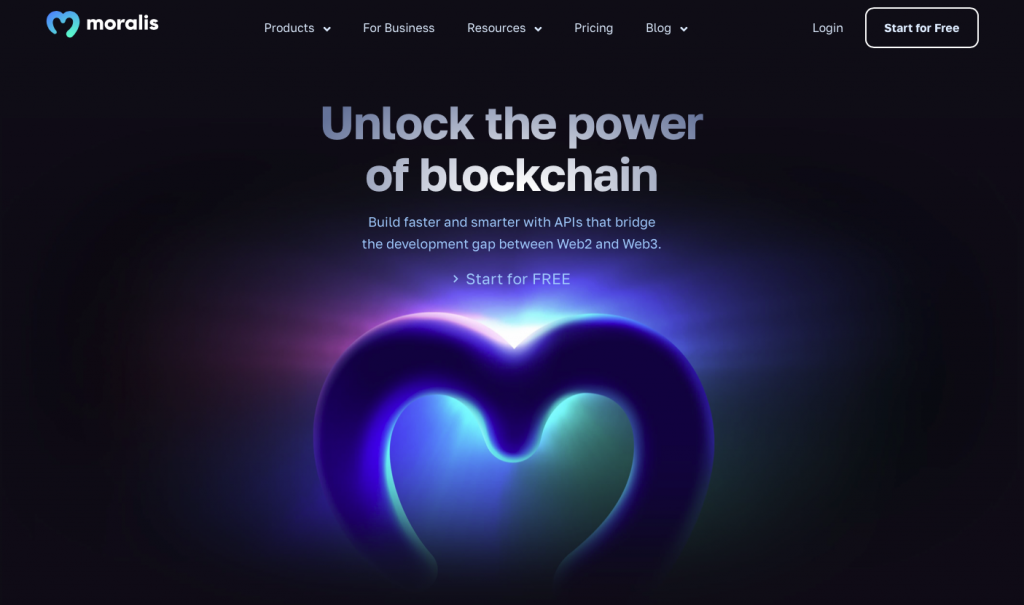
With Moralis, you can avoid wasting time on setting up your own blockchain infrastructure from scratch. Instead, through tools such as Moralis’ Web3 APIs, you can build blockchain projects faster and smarter. These tools aid in everything from Web3 authentication to querying the various blockchain networks for relevant data. As such, with Moralis, you can seamlessly leverage the power of Web3 technology in all blockchain projects to its fullest!
In addition, thanks to Moralis’ cross-chain capabilities, the APIs are compatible with dapp development on multiple networks. This induces Ethereum, Solana, Polygon, BNB Chain, Avalanche, and many more.

Also, did we mention that you can sign up with Moralis entirely for free? Make sure to register straight away!
Why is Web3 Important?
Occasionally, people suggest that the Web3 hype is a direct effect of the “fear of missing out” (FOMO) and clever marketing. However, this is not the whole story. The attention towards Web3 is also influenced by the energy, capital, and talent poured into blockchain startups. So, why are people dedicating resources towards Web3 and investing in this emerging industry?
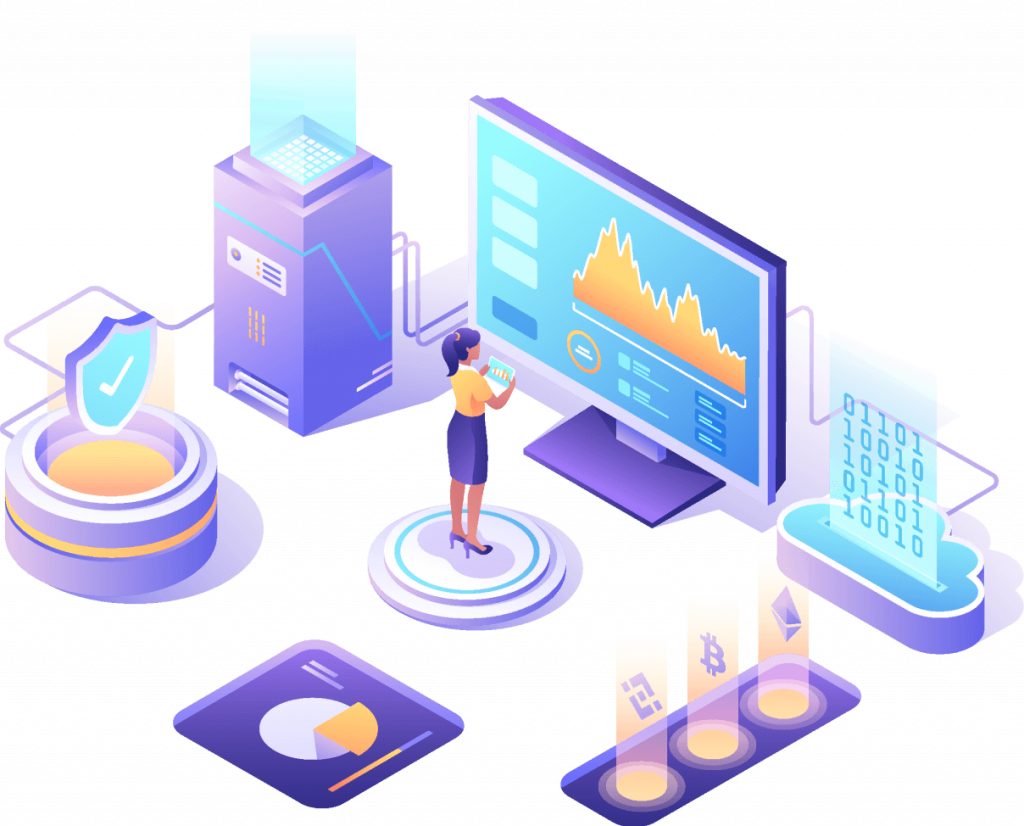
One answer to the question above is the benefits, advantages, and features this new iteration of the web provides. To exemplify, let us take a closer look at three key features of the decentralized web:
- Censorship Resistant – Since Web3 is decentralized, no corporation, nation-state, or third-party actor can control who stores wealth or transacts on a network. This ties together with the core idea that Web3 is permissionless, meaning that no one is excluded.
- Ownership – In Web3, you fully control your digital assets, which are closely tied to your Web3 wallet.
- Decentralized Autonomous Organizations (DAOs) – A DAO refers to the governing body of a platform or protocol. Through these organizations, users can own the platform as a collective, where cryptocurrency tokens act like shares in a company.
The features above are only three prominent examples of why Web3 is essential. To learn more about how the decentralized web influences the business landscape, check out our article exploring how to use Web3 for business!
Summary – What is Web3 Technology?
In this guide, we taught you about Web3 technology. You got to explore blockchains, smart contracts, and dapps, all of which are essential to Web3 development. In combination with a deep dive into Web3 technology, we also provided a brief overview of the internet’s history. You also learned that the Web3 tech stack consists of five layers:
- Programmable Blockchains
- Nodes
- APIs
- Platforms
- Dapps
The article also provided a quick introduction to Moralis. Moralis is the number one Web3 infrastructure provider, supplying industry-leading Web3 APIs that facilitate a more seamless developer experience. As such, if you want to create your own dapps, let Moralis guide you from start to finish!
If you found this article helpful, please check out additional content here at the blog. For instance, read about the Verse programming language or learn about blockchain infrastructure companies! You can also learn Web3 programming by enrolling in Moralis Academy! The academy offers a selection of excellent Web3 development courses for new and more experienced developers. For instance, learn the fundamentals of Web3 by completing the following course: ”Ethereum 101”.
Nevertheless, if you want to utilize Web3 technology to supercharge your development projects, the easiest way to do so is with Moralis. As such, make sure to sign up with Moralis to build dapps faster and smarter!
